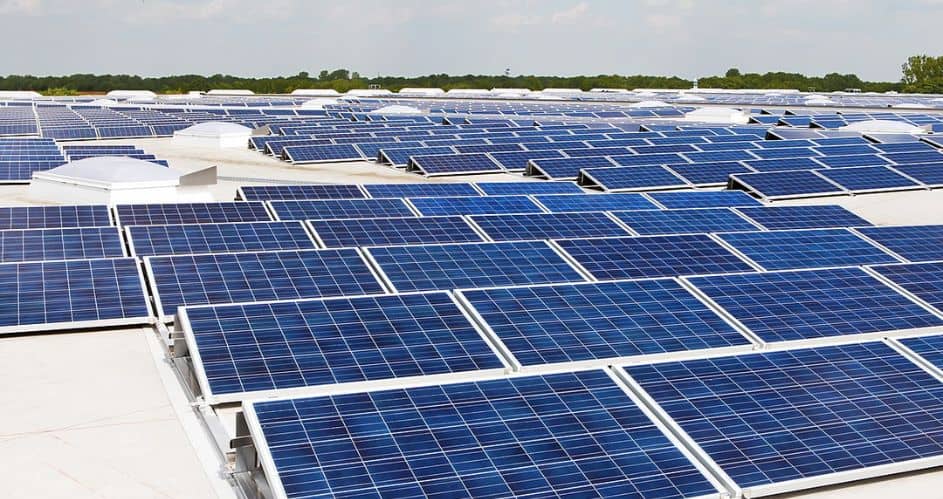
A Solar energy system consists of three essential components: solar panels (modules), a mounting mechanism, and a solar inverter with an electronic controller. In some cases, incorporating a battery is necessary for those seeking complete independence from the grid.
But above all components, the solar panel is the MVP. Why?
Solar panels convert sunlight into DC electricity, while the inverter transforms it into more usable AC electricity. Meaning there will be no “solar” without the photovoltaic boards.
If you’re considering installing solar panels in Edmonton, you’ve chosen the right path to switch to solar energy.
Before you start, here’s a list of things you must consider before setting up a solar energy system.
What to Consider Before Installing Solar Panels in Edmonton
Embracing solar energy, such as installing solar panels on your roof, is a popular step towards a greener lifestyle.
However, conducting thorough research and considering various aspects is essential before committing to this eco-friendly path.
#1. Will Solar Panels Fit on Your Roof?
When considering the switch to solar energy, the first crucial step is assessing your roof type.
Ensure its sturdiness to support solar panels and its exposure to sufficient sunlight for optimal efficiency. Prioritize roof maintenance and repairs before installation to avoid potential disruptions later.
Pay attention to the panel tilt angle, aligning it with your latitude for peak performance. These factors will pave the way for a successful and efficient solar panel system on your roof.
#2. How Much Energy Do You Require?
Before purchasing solar panels, it is essential to assess your monthly energy consumption. Each household has its unique energy usage patterns, which vary from one another.
Understanding your energy consumption will help you accurately determine the number of solar panels needed to effectively meet your monthly electricity requirements.
#3. Can Your Budget Keep Up with the Cost?
Conduct comprehensive research and carefully assess the expenses involved in solar panel installation. Though some solar system companies offer budget-friendly options, transitioning to a greener lifestyle requires a significant investment.
Being well-informed about the total costs will help you make a thoughtful decision about the type of solar panel system that aligns with your goals. Understanding the budget will enable you to make necessary adjustments and confidently proceed in your eco-friendly journey.
#4. What Kind of Solar Panel Fits Your Needs?
With the rapid advancement of technology, choosing solar panels has become more diverse than ever. Solar panel providers now offer various options tailored to specific needs and budgets.
Whether you prefer frameless solar panels or high-performing models that withstand substantial wind loads, the choices are abundant. Take the time to carefully examine these various types of solar panels to find the ones that best fit your home’s requirements.
How to Install Solar Systems in Roofs
The solar panel installation process begins with erecting scaffolding for safety while working on the roof.
Next, install the solar panel mounting system at an angle between 18 to 36 degrees to maximize sunlight exposure.
Securely install the solar panels onto the mounting structure and wire them using MC4 connectors. Connect the solar inverter to the system, positioning it in a sunny location for optimal efficiency.
Establish the connection between the solar inverter and the solar battery for potential backup power. Link the inverter to the consumer unit to generate electricity and monitor production with a generation meter.
Finally, switch on the power and thoroughly test the solar panel system to complete the installation process.
But to ensure your system operates at its best and to maximize energy savings, it’s crucial to have professionals handle the installation process.
Is Solar Panel Installation in Edmonton Worth It?
Solar energy systems offer various advantages to homeowners and businesses, including reduced utility costs, environmental impact, and increased property value. But benefits vary based on location, utility bills, and subsidies.
Sunny regions with high bills can recoup the investment in 5 years, while others may take 10-20 years. Despite the time, most homeowners will eventually experience solar advantages. Other than that, consider factors like home duration, local subsidies, and environmental contribution to decide if going solar is worth it.
How to Clean and Keep Solar Panels in Good Shape
Solar panels are low-maintenance due to their need for moving parts. Once installation costs are covered, ongoing maintenance is minimal.
Periodic inspections a few times a year are necessary to check for dirt or debris. Additionally, every 4-6 years, an installer should assess the system for optimal performance.
Keep panels clean and unobstructed to maximize efficiency and ensure efficient sunlight absorption.
Use a dedicated solar panel cleaning kit with liquid soap, a wiper, and various brush sizes for effective cleaning.
Routine cleaning can be done with a standard garden hose, preferably in the morning or evening, to avoid damage from spraying cold water on hot panels.
However, before attempting self-cleaning, consult your installer to understand the warranty conditions, as some manufacturers may void warranties if self-cleaning is done.